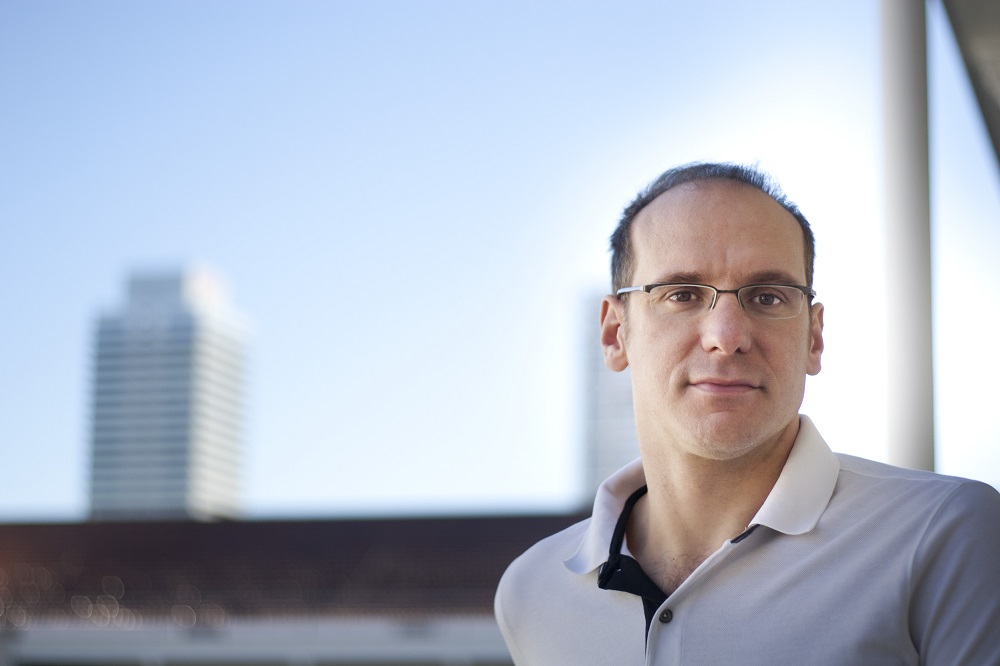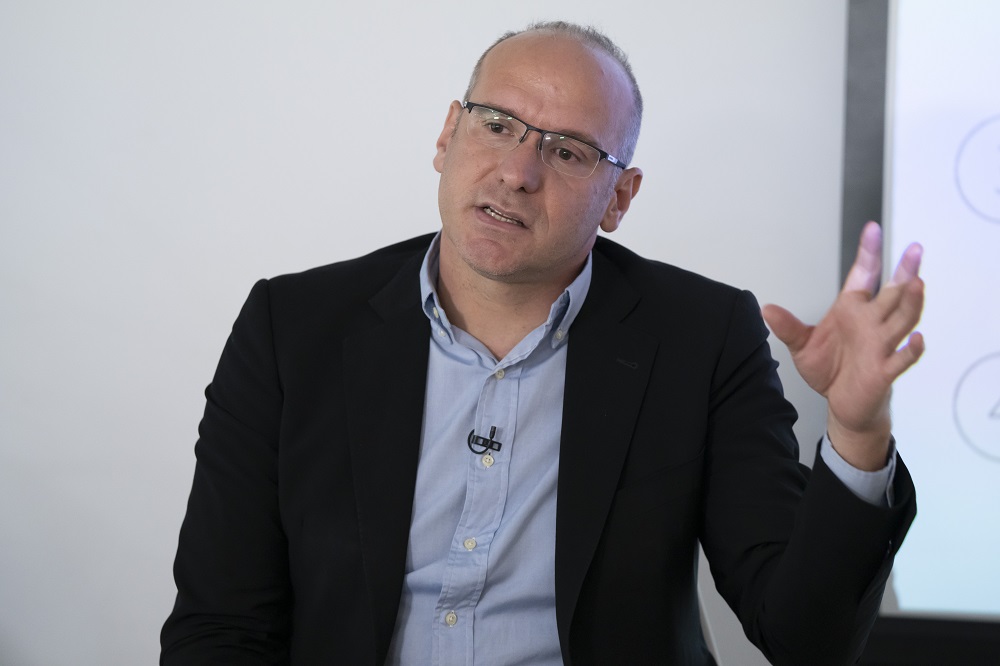“There are only three ways to avoid dependence on gas and fossil fuels and future crises like this one: renewables, renewables and more renewables”
“There are only three ways to avoid dependence on gas and fossil fuels and future crises like this one: renewables, renewables and more renewables”
Albert Banal Estañol, a professor at the UPF Department of Economics and Business and deputy director of the master’s degree in Economics of Energy, Climate Change and Sustainability at the BSE, is an expert in energy and the environment, competition and regulation, and innovation and entrepreneurship.

Albert Banal Estañol, a UPF professor with the Department of Economics and Business and deputy director of the Towards Net-Zero? Gas Infrastructure and Investment Regulation in Spain, is a co-author of the report Towards Net-Zero? Gas Infrastructure and Investment Regulation in Spain.
The report, which Albert Banal Estañol has written together with Olivier Massol, a professor of energy economics at the IFP School in Paris, commissioned by the European Climate Foundation, was presented on 21 September 2022 in Madrid, at the Meeting “The winter of gas”.
Throughout the interview he talks about current issues such as regulatory policy and the gas market in Spain, the crash plan recently approved by the European Commission with the aim of alleviating the energy crisis, dependence on Russian gas, the electricity system in the future, renewable energy sources, the energy transition, and consumer empowerment.
—In your study you warn that the Spanish gas regulatory policy needs profound changes. Based on what approach and with what goals should this policy be rethought?
Spanish regulatory policy has a tendency to transfer a large part of the sector’s risks to gas consumers, and not to constructors and operators. Both the risk of low demand and a large part of the risk of infrastructure construction and maintenance fall with consumers. Even in gas infrastructure construction contracts it is common for there to be a compensation clause for concessionaires in the event of unforeseen events, so the risk to private investment is as low as possible and is passed on to the consumer. This is the reason behind the El Castor project disaster, which was supposed to be Spain’s largest natural gas tank and was halted because of the earthquakes it caused and for which we will end up paying for thirty years.
—You state that in Spain there is an excess of gas infrastructure, a greater capacity than would be necessary, and that projects like MidCat are not useful. What is the reason for this oversizing?
 The transport and import infrastructure, i.e., liquefied natural gas (LNG) plants and transboundary pipelines, was built on the basis of demand forecasts made in the 2000s, which predicted an increasing trend in natural gas consumption. Gas consumption in Spain, however, reached its peak in 2007 and has since remained between stable and a tendency to decrease.
The transport and import infrastructure, i.e., liquefied natural gas (LNG) plants and transboundary pipelines, was built on the basis of demand forecasts made in the 2000s, which predicted an increasing trend in natural gas consumption. Gas consumption in Spain, however, reached its peak in 2007 and has since remained between stable and a tendency to decrease.
Current forecasts predict a gradual decline, which will be accelerated by energy and climate goals. MidCat would help solve a short-term problem to become a problem in the long term, both in regard to payment and in to decarbonization and energy transition.
“MidCat would help solve a short-term problem to become a problem in the long term, both in regard to payment and in to decarbonization and energy transition”
—Is it the final consumer who ends up bearing the costs of this excess spending?
Indeed, each year the market regulator, the National Commission on Markets and Competition (CNMC), calculates the remuneration to be received by the company that owns and operates the network, Enagas, and divides this amount of money among gas consumers. This fee or “toll” is paid in the gas bill. According to the regulator itself, for domestic consumers, tolls and charges usually account for half of the cost of the bill.
—How do you view the European Commission’s recently proposed measures as an energy crash plan to reduce the hike in electricity prices and obtain additional resources?
The truth is that, with the exception of reducing demand, none of the measures is ideal: they all have their setbacks. Of course, in the long term, what we must do is reduce energy demand and, above all, dependence on gas and fossil fuels. Reducing demand in the short term is complicated if not by applying restrictions. But, although there is no ideal measure, we must clearly do something. These exorbitant prices are having a huge impact on businesses and households, and especially on the most vulnerable households. If we do nothing, this winter may be terrible.
“These exorbitant prices are having a huge impact on businesses and households, and especially on the most vulnerable households”
—One of the proposed measures is to reduce electricity consumption by 5% during peak demand hours, and an across-the-board 10% reduction in the longer term... Is this feasible? Would companies and individuals be able to comply?
Reducing demand is difficult, especially in the short term. Of the European Union’s three 20-20-20 targets for 2020 (reducing greenhouse gas emissions by 20%, increasing the share of renewable energy use by up to 20%, and improving energy efficiency by 20%), energy efficiency, i.e., reducing consumption, was the most difficult to achieve. But we can do a lot of things, like improve insulation in buildings and rationally use air conditioning in the summer and heating in the winter. Governments must combine incentives and penalties, that is carrot and stick, to achieve this.
—Could capping the price of electricity generated by renewables and nuclear power plants reduce incentives for investment in these clean energies in the future?
Yes, price capping could reduce incentives to invest in renewables. But the incentives are so high that even if prices are not higher than these price caps we are talking about (200 EUR/MW), investment in renewables remains profitable. Renewable energy auctions in recent years have shown that renewable energy can reach very low costs, at around 30 EUR/MW. I would not consider nuclear power to be clean, and what is clear is that we must not invest in it any longer.
—Will the tax that provides for taxing 33% of the extraordinary profits of fossil fuel companies be met with great reluctance within the sector?
This tax will obviously be rejected by the sector. They will say that they already pay taxes and that it is unfair because they have made investments based on existing taxes. They will also say that, in the long term, this will affect the risk of the business, and investments, therefore. But these taxes would bring relief to the treasury, which has dried up due to the pandemic, and would enable helping vulnerable families and businesses. It may be the least, or one of the least evil measures we will have to take. The idea of these taxes on extraordinary profits is to target companies that have been lucky enough to benefit from a situation for which they are not responsible, that is, an extraordinary situation.
“The idea of these taxes on extraordinary profits is to target companies that have been lucky enough to benefit from a situation for which they are not responsible, that is, an extraordinary situation”
—Has the war in Ukraine triggered the view that there is no choice but to reduce dependence on gas and fossil fuels?
Absolutely! There are only three ways to avoid dependence on gas and fossil fuels and future crises like this one: renewables, renewables and more renewables.
—Should as dominant a position as Russia’s in terms of gas be avoided in any energy market?
Yes, this is one of the three main objectives of an energy policy: guarantee supply, that is, ensure that energy will be available when and where it is needed (the other two main objectives would be affordability/competitiveness and decarbonization). In this sense, the Spanish laws of the 2000s forced the industry to diversify its gas sources, due to tensions with Algeria. The same has not occurred in other European countries, such as Germany, for example, with gas from Russia, and we are now suffering the consequences.
—Could this whole shake-up end up encouraging the energy transition? Doesn’t the fact that the EU included nuclear energy and gas within the green and renewable energy package go against this?
Far from it. I believe that this crisis has made it clear that we must commit even more to renewable energies and the energy transition. What indeed slows down the energy transition, and is very bad news, is that the EU, due to political pressure, has ended up deeming nuclear and gas as green energies, against all technical criteria.
—Should all new energy infrastructure be based on sustainable development? What is the current status of the technology needed to achieve the zero-emission targets?
All investment should, from now on, focus without any doubt on sustainability. We still don’t know what the dominant technologies will be in the future electricity market. But what we do know is that we will move from a vertical, centralized, unidirectional system to a horizontal, decentralized, distributed, bi-directional electrical system, in which all, including households, will have to participate actively.
“We will move from a vertical, centralized, unidirectional system to a horizontal, decentralized, distributed, bi-directional electrical system, in which all, including households, will have to participate actively”
—How will the various initiatives and projects to promote energy self-sufficiency and consumer empowerment be affected by this whole situation?
Individual and shared self-production, as well as energy communities, will be strengthened by this crisis. Energy transition and citizen empowerment are the solutions to energy crises like this one. We must make everyone realize that the future lies in people’s active participation.
